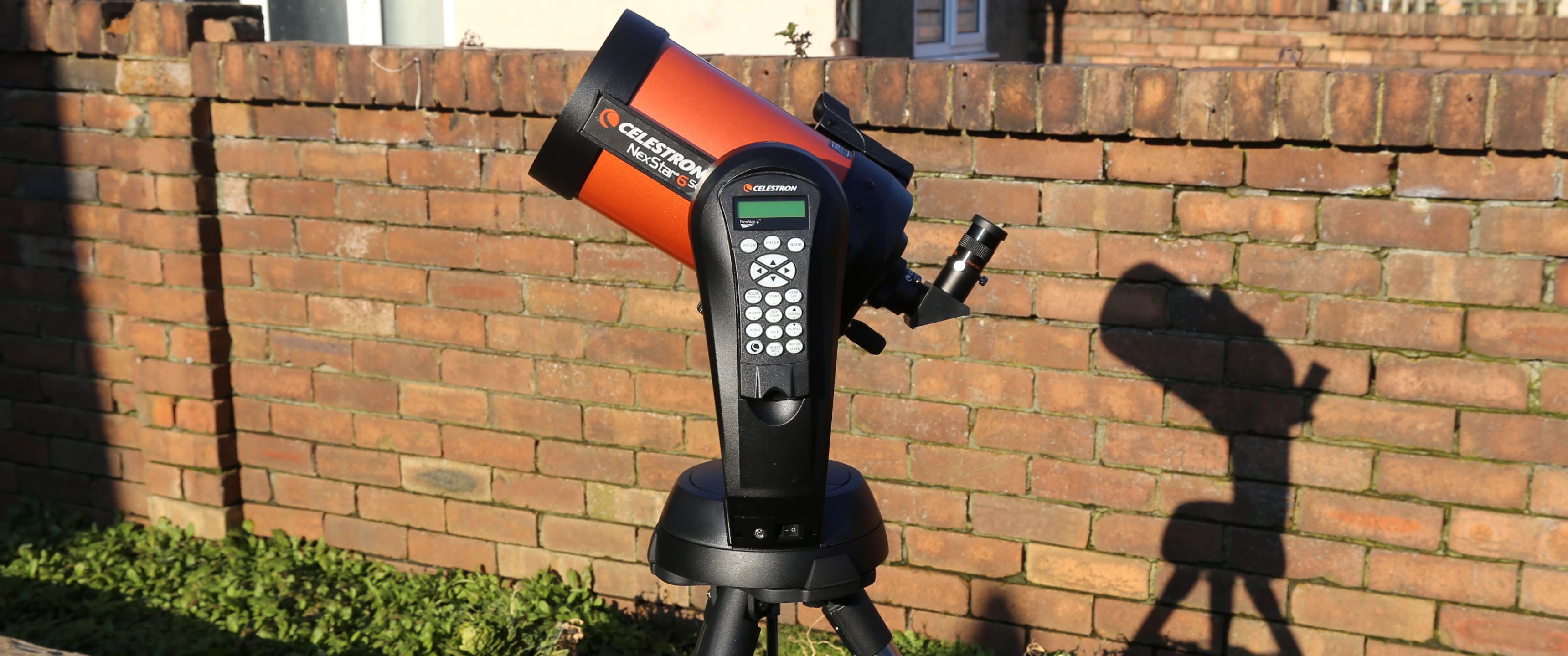Digital Camera World Verdict
If you want to observe planets and the Moon in high magnifications and see precise, clear views of deep sky objects the computerized Celestron NexStar 6SE is hard to beat. Once you’ve leveled it, aligned it, focused it, and got to know its GoTo system the Celestron NexStar 6SE delivers hit after hit. Though its GoTo tech is showing its age, with the concept of a wired hand controller is quickly becoming outdated in the age of the internet.
Pros
- +
No stargazing knowledge required
- +
Allows high magnifications
- +
Accurate GoTo system
- +
No color fringing
Cons
- -
Short battery life
- -
No AC adaptor in the box
- -
NexStar GoTo seems dated
- -
Tripod has a large footprint
Why you can trust Digital Camera World
How well do you know the night sky? The Celestron NexStar 6SE assumes you know nothing, but are capable of finding and pointing the telescope at any three bright stars. If you can do that then this computerized GoTo telescope’s SkyAlign tech automatically aligns itself. It’s clever stuff – and it’s certainly why the Celeston NexStar range feature as some of the best computerized telescopes.
However, the Celestron NexStar 6SE isn’t aimed at beginners, the high price makes sure of that, though there are few GoTo telescopes this easy to use this side being a fully fledged smart telescope.
Resplendent in its iconic orange livery, the Celestron NexStar 6SE’s diminutive optical tube is down to its Schmidt-Cassegrain optical system, one of the most popular designs for amateur astronomers.
But is the Celestron NexStar 6SE telescope a worthy purchase for keen stargazers? Here’s everything you need to know about why to buy – and why not to buy – the Celestron NexStar 6SE.
Specifications
Optical design: Schmidt-Cassegrain reflector
Aperture: 5.9”/150mm
Focal length: 59”/1500mm
Focal ratio: f/10
Eyepiece focal length: 1”/25 mm (60x)
Total kit weight: 21 lbs/9.5 kg
Mount type: motorized altazimuth
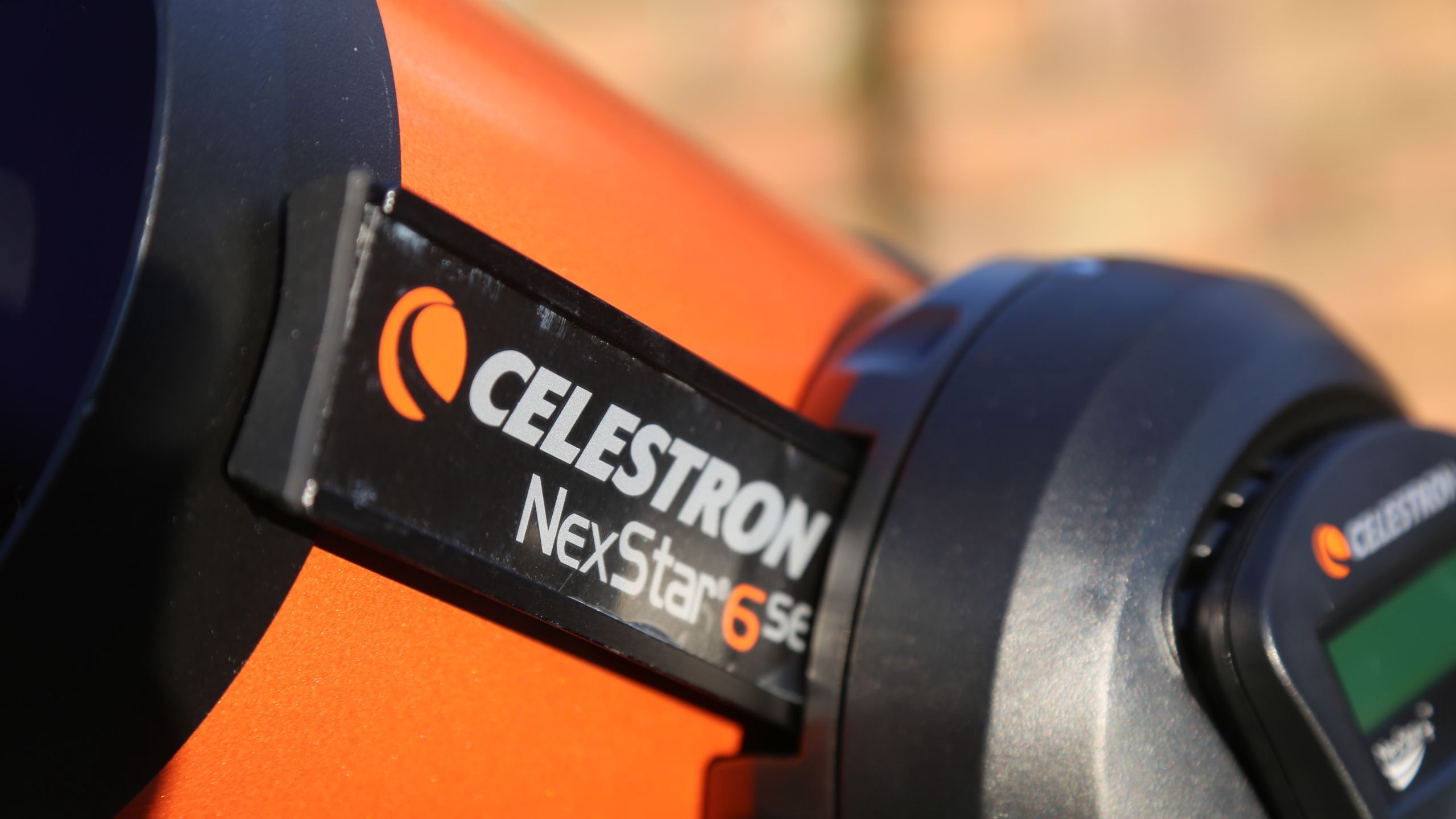
Key Features
The Celestron NexStar 6SE is a Schmidt–Cassegrain catadioptric telescope of the kind that’s been popular with amateur astronomers for decades. It sits on a single fork arm motorized mount that doubles as the brains behind a computerized GoTo system. If you have little knowledge of the night sky then this is gold dust.
You select an object from a database on this telescope’s hard-wired NexStar+ hand controller and the Celestron NexStar 6SE slews right to it. Its database has 40,000 objects and you can also go off-catalog and manually enter celestial coordinates if you want to study, say, a passing comet.
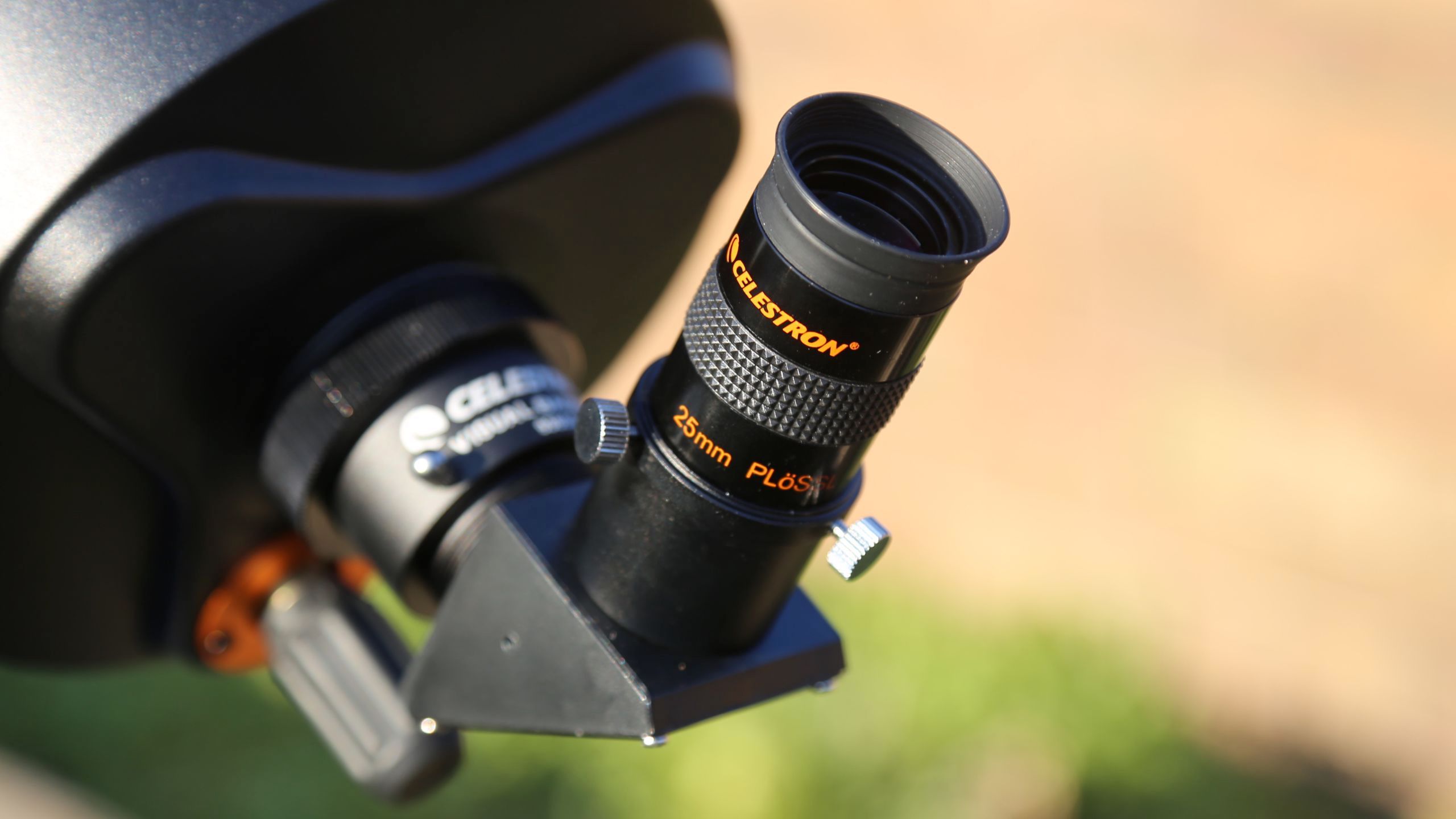
The Celestron NexStar 6SE has a 6-inch aperture and comes with a single 25mm eyepiece. The inclusion of only one optic is a shame, as the telescope's focal length makes high magnifications – as high as 350x – possible and usable if you add your own higher-power eyepieces. The eyepieces sit in a star diagonal at the back of the optical tube, which makes it easier to look at objects without having to be directly behind the telescope.
While the Celestron NexStar 6SE telescope is not designed to be one of the best telescopes for astrophotography, it is possible to attach a camera to the back of the Celestron NexStar 6SE using a T-adaptor. Images of the lunar surface are the most likely target.
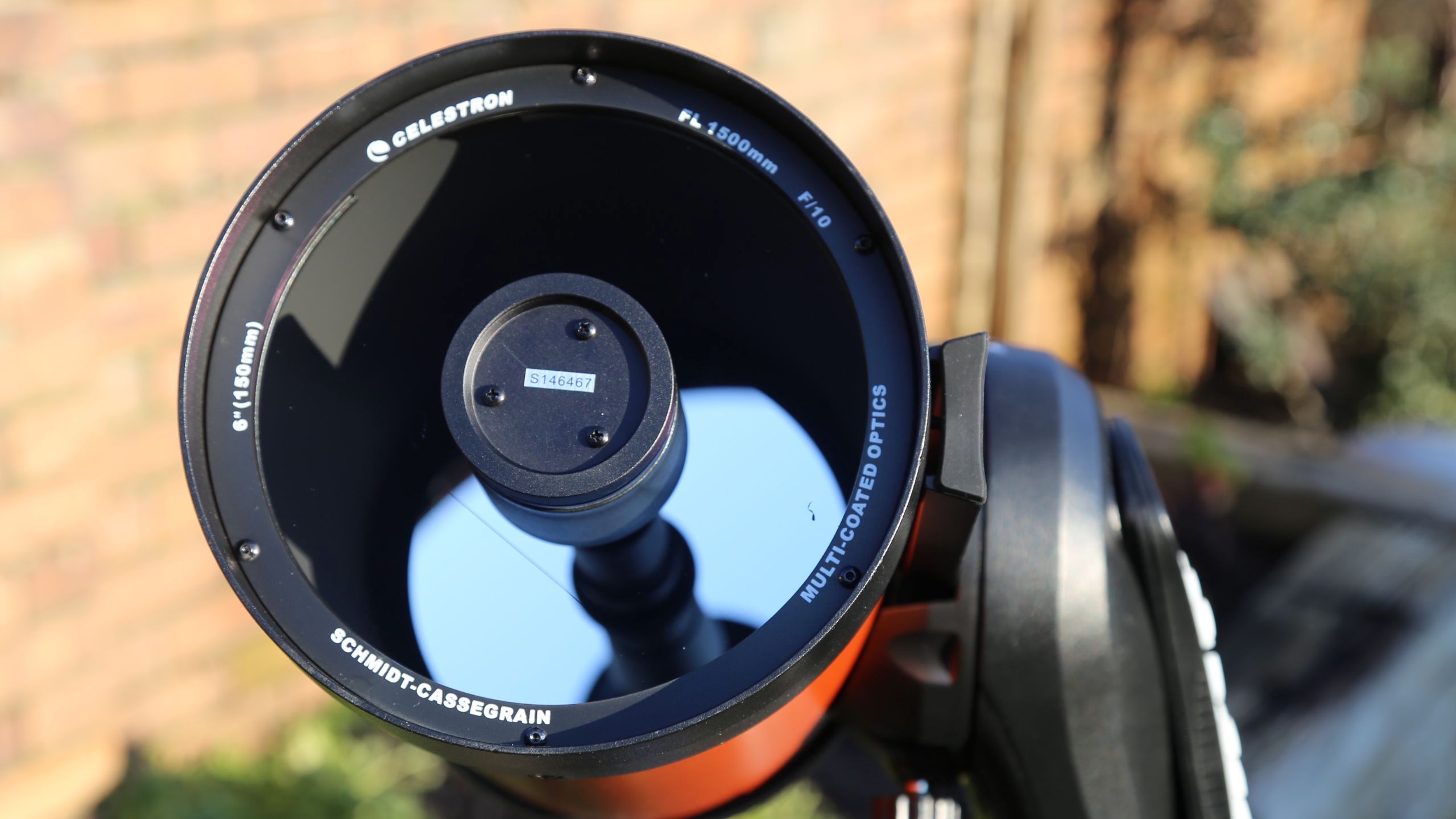
Build & Handling
The Celestron NexStar 6SE’s fork mount is a simple altazimuth design – as most motorized GoTo telescopes are – so there’s no need to get involved in complicated polar alignments and balancing using counterweights, as is necessary on equatorial mounts.
Although its aluminum optical tube is lightweight, the Celestron NexStar 6SE is not the easiest telescope you’ll ever maneuver from your house to your backyard. Most of the blame goes to its tripod, which has a very large footprint when set up, though it keeps the Celestron NexStar 6SE stable. Being completely level on a hard surface is equally as important if the Celestron NexStar 6SE’s GoTo system is to work accurately.
The best advice is to set it up while it’s still light because as well as having to use a spirit level (a small and highly losable one is provided in the box) it’s also necessary to align the Star Pointer red dot finderscope. Once that’s done the StarAlign system works well, though you can prevent time-consuming failures by choosing bright stars that are as far from each other as possible. It takes slightly longer to manually slew between to and fro, but it’s worth it.
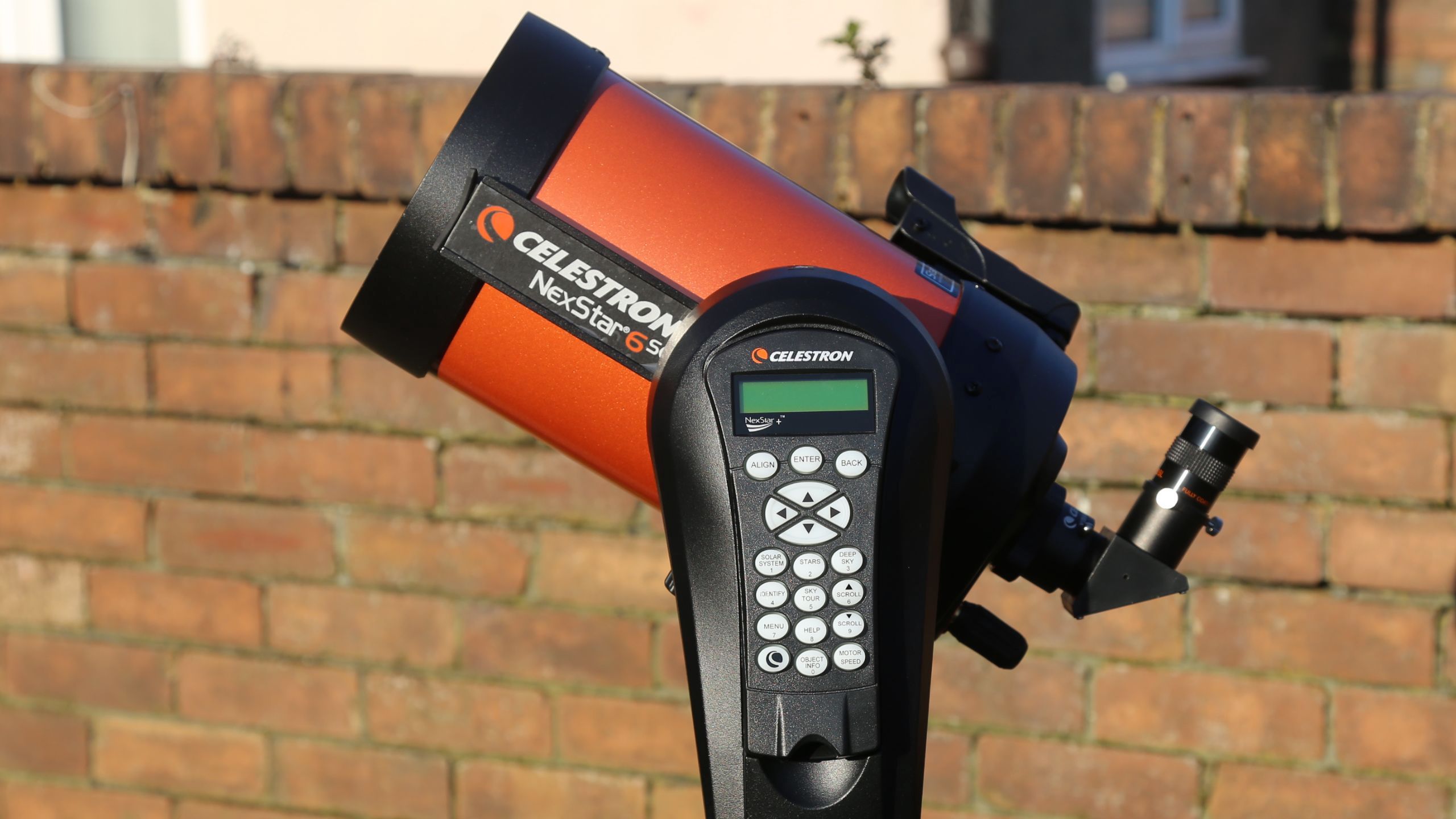
Performance
The Celestron NexStar 6SE is an excellent telescope for observing virtually anything in the night sky. Once you’ve leveled it, aligned it, focused it, and got to know its GoTo system the Celestron NexStar 6SE delivers hit after hit.
Our first target was Mars, its red hue immediately obvious, with other solar system targets even more impressive. Jupiter’s moons were presented clearly around the giant planet’s bright, happily, optically precise disk. There was no hint of any color fringing around this bright object. Ditto a First Quarter Moon, on which we observed the light and shadow close to the sunset/sunrise line. We could clearly see the magnificent Apennine Mountains, using high-power eyepieces to survey Mare Imbrium and the Archimedes crater in impressive detail.
We also went off-catalog and went searching the heavens for comet C/2022 E3 as it passed its closest to Earth. Googling then manually entering the RA (right ascension) and Dec (declination) – coordinates on the sky that correspond to longitude and latitude on Earth – was a bit of a pain, but the Celestron NexStar 6SE produced a decent view of this faint and diffuse object.
However, what really delighted us were tack-sharp views of the reflected starlight on the Orion Nebula’s interstellar cloud. Optically, the Celestron NexStar 6SE is hugely impressive – but you will need to buy some good quality eyepieces to get the best from it.

Verdict
Sharp, precise, and with impressive StarBright XLT optical coatings that avoid any optical nasties, the Celestron NexStar 6SE is a telescope to save up for and use for many years.
However, it’s not without its foibles and there are some reasons to think that the Celestron NexStar 6SE and its GoTo ilk will soon be in line for a tech refresh because the concept of a wired hand controller is quickly becoming outdated.
You can find out more about our astronomy coverage at Digital Camera World, with our guides to the sky this month, or get inspired with the latest images from the James Webb Space Telescope.

Jamie has been writing about photography, astronomy, astro-tourism and astrophotography for over 15 years, producing content for Forbes, Space.com, Live Science, Techradar, T3, BBC Wildlife, Science Focus, Sky & Telescope, BBC Sky At Night, South China Morning Post, The Guardian, The Telegraph and Travel+Leisure.
As the editor for When Is The Next Eclipse, he has a wealth of experience, expertise and enthusiasm for astrophotography, from capturing the moon and meteor showers to solar and lunar eclipses.
He also brings a great deal of knowledge on action cameras, 360 cameras, AI cameras, camera backpacks, telescopes, gimbals, tripods and all manner of photography equipment.
